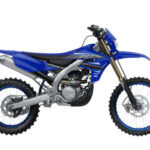The electric bike industry, while booming, often feels stuck in the past when it comes to design and technology. Many lists of “best electric bikes” continue to recommend models that rely on outdated features, ultimately compromising rider experience and performance. It’s time for consumers to demand more from their e-bikes and for the industry to catch up to modern cycling standards.
One of the most glaring examples of this outdated thinking is the persistent use of heavy front suspension forks as a primary comfort feature in many electric bikes marketed for general use. While suspension forks have their place in mountain biking, their application on urban or road-focused e-bikes is often misguided. These forks, especially in lower price ranges, are frequently poorly designed for effective shock absorption on paved surfaces. If they are tuned soft enough to absorb minor road imperfections, they become dangerously prone to diving under braking and introduce unwanted squirm and instability into the handling, compromising rider safety.
Alt text: Outdated, heavy front suspension fork on an electric bike, highlighting its bulky and unsophisticated design.
Consider traditional touring bikes, designed for extreme comfort and endurance over long distances. These bikes, from entry-level to high-end models, prioritize carefully considered geometry, frame materials, and component selection to achieve comfort, reliability, and efficiency. You won’t find suspension forks on these bikes because true comfort and performance come from holistic design, not from adding heavy, inefficient gimmicks.
Another area where the e-bike industry lags behind is in motor technology. While hub-drive motors were once a common and affordable entry point into electric bikes, mid-drive motors have become increasingly accessible and offer significant advantages. Virtually every hub-drive model currently on the market can now be found with a mid-drive alternative at a comparable or even lower price point. Hub drives, often paired with simple cadence sensors, represent a step back to the technology of the 1990s. A “best of” list in 2023 should prioritize bikes equipped with modern, efficient mid-drive motors and responsive torque sensors.
While some riders in perfectly flat areas might find hub drives adequate, they quickly become a limitation when encountering hills or requiring extended range. Mid-drive motors, with their torque-sensing capabilities, offer a more natural and efficient riding experience, especially in varied terrains. Beyond performance, hub motors present practical challenges. Changing a flat tire on a hub-motor e-bike is significantly more complicated, and the added weight of the motor in the wheel makes the bike cumbersome to lift and maneuver, especially in tight spaces. It’s time for the industry to move beyond hub drives and embrace the superior technology of mid-drive systems, even in more affordable e-bike models. It’s a disservice to consumers that even reputable brands sometimes equip otherwise well-designed bikes with this antiquated technology.
Alt text: Modern mid-drive motor seamlessly integrated into the frame of an electric bike, showcasing its compact and efficient design.
Frame materials are another area ripe for improvement. The vast majority of electric bikes, even those with hydroformed tubing for shaping, utilize heavy, straight-gauge aluminum. This choice results in frames that are often described as dull, buzzy, and unresponsive. Butted and hydroformed tubing, which has been commonplace in traditional bikes for decades, offers a solution. These advanced tubing technologies allow for frames that are lighter, more responsive, and less prone to vibration, enhancing both ride quality and efficiency. Excess weight directly impacts range, making heavier e-bikes less practical, particularly for smaller riders who may struggle to handle them.
Some e-bikes even feature square tubing in their frame designs. While square tubing can sometimes be necessary to accommodate proprietary battery shapes within the downtube, it often leads to an excessively stiff and harsh ride. Combining a stiff rear triangle from square tubing with comfort-oriented components like suspension forks, comfort handlebars, and padded seats creates a disjointed and unbalanced riding experience, particularly for on-road use. The stiffness of the rear end negates the benefits of the comfort components, resulting in a ride that is still unnecessarily jarring.
Alt text: Diagram contrasting straight gauge tubing with butted tubing in a bicycle frame, emphasizing the weight savings and improved ride quality of butted tubing.
It’s not about negativity; it’s about advocating for better options and demanding more value for money. Acceptable isn’t good enough anymore. The current standard of “good enough” e-bikes should be priced significantly lower and relegated to big-box department stores. The technology and design exist to create truly exceptional electric bikes without exorbitant price tags. Small, independent shops are demonstrating this every day. With 50 years of cycling experience, even a small shop can assemble and offer e-bikes that surpass the quality and design of many mass-produced models. Manufacturers have the resources to do even better. It’s time for consumers to raise their expectations and demand electric bikes that incorporate modern design principles, efficient technology, and high-quality components, ensuring a superior riding experience and true value for their investment.

